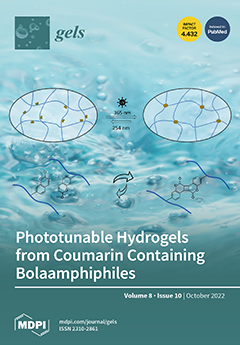Fish processing waste is a prospective source of collagen and a cost-effective environmental pollutant. The skin of the purple-spotted bigeye snapper (
Priacanthus tayenus) was extracted utilising various acid soluble collagens (ASC) including acetic acid (AAC), lactic acid (LAC), citric acid (CAC)
[...] Read more.
Fish processing waste is a prospective source of collagen and a cost-effective environmental pollutant. The skin of the purple-spotted bigeye snapper (
Priacanthus tayenus) was extracted utilising various acid soluble collagens (ASC) including acetic acid (AAC), lactic acid (LAC), citric acid (CAC) and pepsin soluble collagens (PSC). In this study, PSC (6.65%) had the highest collagen yield, followed by AAC (5.79%), CAC (4.15%), and LAC (3.19%). The maximum temperatures (
Tmax) denaturation of AAC, LAC, CAC, and PSC were 31.4, 31.7, 31.5, and 33.2 °C, respectively. UV-VIS absorption spectra showed all extracted collagens had a range of absorbance at 230 nm, due to the presence of glycine, proline, hydroxyproline, and triple-helical collagen. Additionally, they exhibited amide A, B, amide I, II, and III peaks. SDS–PAGE identified all extracted collagens as type I. The PSC had a significantly higher (
p < 0.05) hydroxyproline content than acidic extraction 66.3 ± 1.03 (mg/g sample). Furthermore, all samples were extremely soluble in acetic conditions at pH 5, and all collagen was soluble in NaCl up to 3% (
w/
v). Therefore, PSC was the best treatment since it did not impact collagen triple helical and acetic acid yielded the most collagen in ASC extraction. Overall, the analysis revealed that fish skin waste might be used as an alternate source of collagen in diverse applications, particularly in food applications.
Full article






